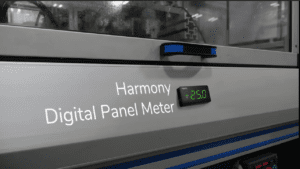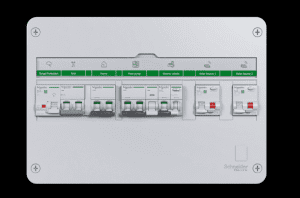This post was written by Rob McKernan, a senior vice president, Americas region, of Schneider Electric‘s IT business and was originally featured in Forbes. You can learn more about Rob McKernan or Schneider Electric’s Lifecycle Services from the links provided here.
In 2012, the volume of digital content will reach 2.7 zettabytes – a staggering amount of information, which could fill up 86 billion 32GB Apple iPads. Stacked, these iPads would build a mountain 35 times higher than Mount Fuji.
Tech giants Google, Facebook, Microsoft and Amazon are in an intense battle for market share. But perhaps they should focus on the real issue determining competitive advantage: With no reliable, cheap renewable energy source in sight, how will they sustainably power massive data centers (using 2% of U.S. electricity) needed for this growing mountain of data, in the face of increased scrutiny on the “dirty” cloud?
Greenpeace protests have led to environmentalist and public uproar about data center carbon emissions. Companies have quietly built these facilities in inexpensive regions (such as Apple’s facility in Maiden, North Carolina – a state using coal for 61% of its power), drawing on cheap energy to keep operational costs low and return maximum value to shareholders. Unfortunately, the cheapest energy today tends to be fossil fuels.
The protests stem from a disruption in the data center energy market. In the past, data centers did not need much energy, and the energy sources they did use, like coal, were cheap, plentiful, and accepted. Our world’s explosion of technology – compounded with climate concerns – has changed this drastically.
The IT industry must adapt. There’s just one problem: we do not yet have the infrastructure or development of a viable renewable energy source. And though Apple touts construction of on-site solar fields, it’s critical to remember there are a myriad of technology and cloud service providers (many of whom support the tech giants) who do not have the resources or location to build on-site renewable sources or engineer complex geothermal systems.
Despite all cited constraints, the IT industry is overlooking one fact: sustainability can be achieved in data centers today, in an affordable and simple way using existing resources. If we become more intelligent about our energy, we can slash emissions anywhere from 30 to 50% – making an enormous dent needed today in the human race’s carbon footprint.
Aside from meeting regulatory and societal pressures, sustainability brings tremendous advantages by improving operations, slashing consumption, increasing employee satisfaction and adding value to a company’s product.
To make this happen, data centers must consider all sides of the energy equation: from the intelligent procurement of clean, affordable energy to the installation of energy efficient technologies enabling every watt used to meet its fullest potential.
Supply Side
The most cost-effective energy option can change at any minute, especially with renewables. Drought and low water levels can drive hydropower prices up, while flash floods in the same area can send rates falling at lightning speed.
Data centers can hedge price volatility and meet budget objectives by taking a more calculated approach to energy procurement. While the significant resources required for this approach haven’t always been feasible, it is getting easier. Outside sustainability service providers can assist data centers with a range of sustainability solutions (planning, monitoring and reporting) to ensure the most effective clean energy is sourced at any given moment.
Demand Side
Even if a data center sources 100% of its energy needs from renewables, blind consumption is no longer acceptable – not for the environment, society or the bottom line. This makes energy efficiency critical, no matter which way you look at it. Just by installing energy-efficient technologies, consumption can be reduced by 30%.
It’s well known that cooling is the largest consumer of energy in a data center. Traditionally performed by energy-intensive HVAC systems, racks can now be cooled using outside air – a free and simple resource. When built in regions with naturally occurring chilly air (such as Google’s 11-acre data center in Ireland), free cooling is one of the most effective demand-side strategies to slash consumption.
Regardless of how data centers cool their servers, many still routinely mix hot and cold air, limiting capacity and effectiveness in a system. This is easily remedied with simple, low-cost methods (i.e. installing air tiles and vents) to separate hot and cold air. Plus, implementing an air containment strategy can return up to 25% in savings.
Demand Response
The “killer app” of the smart grid is demand response – the ability of energy companies and businesses to communicate and determine when to best produce and consume electricity.
The business benefits of this strategy are enormous. Not only does demand response have the potential to reduce carbon emissions by 50% over 20 years, it allows companies to participate in the power financial market by selling back unused energy at peak times and opening up entirely new streams of revenue.
There are numerous ways data centers can take advantage of demand response. For instance, advancements in weather prediction have made precise environmental data available at low costs, allowing data centers to work with utilities to pre-heat and pre-cool facilities to avoid energy-intense periods and related high costs.
Sustainability in the data center is not an “if” for businesses, but a “when” and “how.” Every company from the smallest IT startup to Google needs to seriously consider the energy equation if the technology industry truly desires sustainability, energy security and the ability to meet ever-growing demand.



